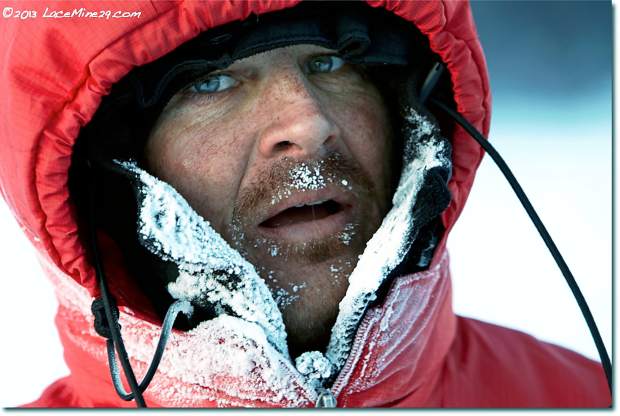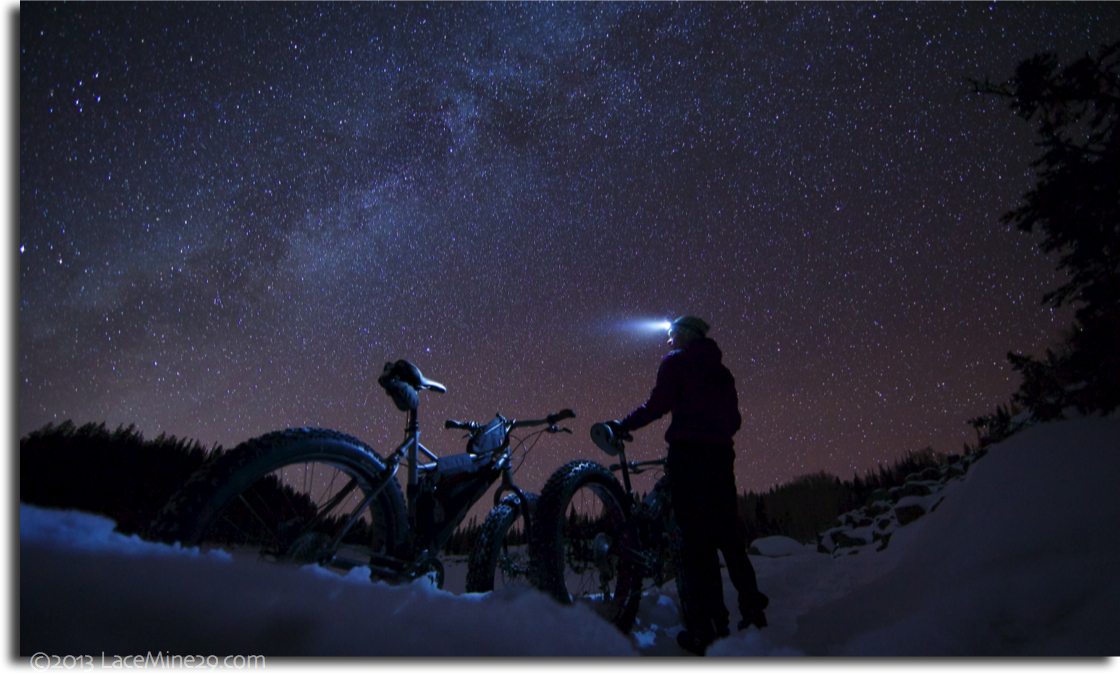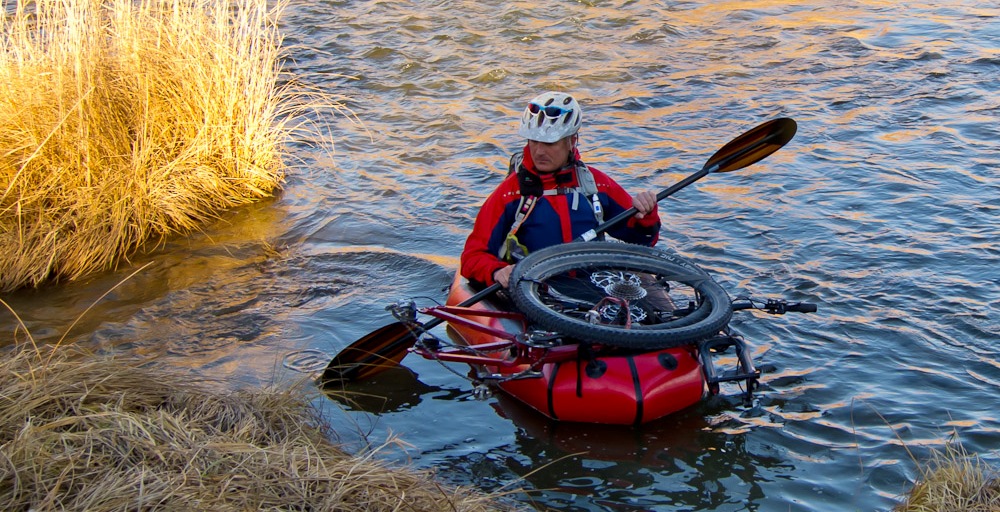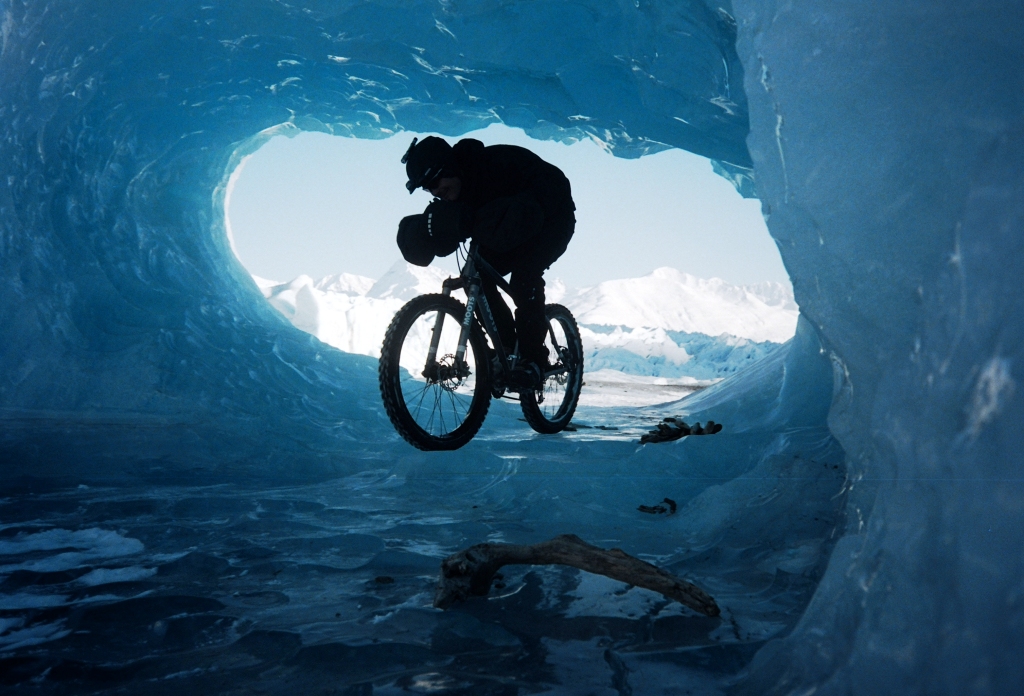
Mike Curiak at an Iditarod race in Alaska. Photo by Chris McLennan.
From the early rebels racing down the Repack to today’s craziest freeriders flipping off massive cliffs, every era of mountain biking has needed pioneering figures to push the boundaries of what’s possible on a bike. In endurance racing, Mike Curiak was one of those key people who helped define just how long and far the human body can go on a mountain bike. He is best known for his exploits at Alaska’s brutal Iditaraces. Over his 17 year race career, he won numerous iterations of the 225-mile Iditasport and 350-mile Iditarod Trail Invitational, set a course record on the 1,100-mile Iditasport Impossible, and later completed the 1,100-mile race fully self-supported. He also helped organize the first successful Great Divide race, won the Kokopelli Trail Race, and was a nominee for the mountain bike hall of fame among other palmares.
Curiak retired from racing almost 10 years ago after winning the 2005 Iditarod Trail Invitational. These days he says he’s focused more on fun, though it’s his version of fun, i.e. multi-day bikepacking trips that require packrafting across lakes and down rivers and other adventures like that. He’s also focused on his well established Lace Mine 29 wheel-building business. I spoke to Curiak before he set off on a three-week packrafting trip through the Grand Canyon. We talked about his early entry into endurance racing, endless laps on 24-hour race courses, his experience racing in Alaska, helping create the Great Divide race, his disappointment with the direction endurance racing has gone recently, and much more.
When and how did you get your start in endurance racing?
I started riding in the ’80s, more or less commuting to classes in college. There wasn’t really any such thing as endurance then. In Michigan, where I grew up and went to college, a three hour ride was a long ride and something to be proud of at the time. I finished my undergrad and moved to Crested Butte, Colorado and every ride out there was much longer, bigger, more epic. I started to notice that we’d get towards the end of a ride and everyone else was just shellacked, but I felt better at the end than I did at the start. I thought the longer the ride, the better things are. So when I first heard about a 12 hour relay race in Michigan not too far from where I went to college, I decided I should go check it out. I won that one. I did another race in the fall and won that one. I did the same one, 12 hours of Ithaca, and won again the following Spring. I thought wow, maybe there’s something to this. I was beating a substantial number of the teams along the way and that obviously did nothing but encourage me to continue trying that sort of thing.

Mike Curiak self portrait in the snow. Photo courtesy of Mike Curiak.
How did your endurance racing progress from there?
24 hour races were a mandatory step in the progression. There’s not really any way to learn how your body’s going to respond to a day in the saddle other than to do a full day in the saddle. I think I ended up doing 33 or 34 24-hour races. Probably after about a dozen of those I’d learned what I needed to learn from them, but the industry, race promoters, race sponsors, and my sponsors just couldn’t see beyond that venue. We all got forced to do those way longer than we wanted to.
I went on to 100 milers briefly. I realized I just do not have the speed to go fast for 100 miles. The first time I did Leadville I think I was two hours behind the guy who won. And I was stoked with how fast I went that day. It was a great day. It became obvious that this wasn’t going to work. Having realized that 100s weren’t going to happen and that going in circles for a day at 24s wasn’t that fun, I started looking at other stuff. At the time, it’s not a stretch to say there wasn’t anything. I started looking in my own backyard, like the Kokopelli Trail. It’s 146 miles. It covers a lot of ground and a whole lot of vertical and it’s just not a simple task. Especially in 1997 or ’98 when I first started looking at it. I’d heard that people had done it in a day, but I couldn’t actually track anyone down who had. So it was wide open and it was big and scary. We weren’t even sure it could be done then. Today I think the men’s record is around 12 hours. It’s not even that long of a day in the saddle. But we had to walk before we could run and that was one of the first big steps we took in figuring it out.
Tell me about your path to racing the Iditasport and later the Iditarod Trail Invitational.
When I moved out to Crested Butte, it was to be a ski bum and establish residency for law school. Being in an alpine winter environment felt normal for me, for some reason. That winter I was basically present when a friend of mine died in an avalanche. I made a promise to myself. The term everyone uses these days is bucket list, but I had a list in a journal I kept at the time of the things I was going to accomplish before I die. One of those things was ride the entire Iditarod Trail. It was ’96 when Dewy died. In ’97 I was there at the start of 100 mile Iditasport and I have not missed a whole lot of those in the ensuing 18 years.
People think of Alaska as big, bold, wild mountains. And it is those things, but where the Iditarod course goes, probably a solid 2/3rd of it looks a whole lot like where I grew up in Michigan. I was very comfortable in that environment. It was always just sort of a no brainer to go back to that each year to see what I had learned in the previous 364 days.
Maybe the race hasn’t changed drastically, but the equipment certainly has over the years from early mountain bikes to say your Moots ultimate fat bike. Has it made the racing easier?
That’s kind of a trick question. It levels the playing field in a way. It allows people who don’t have the time or desire or gumption to go to their bike shop and take a Snowcat rim with a 2.3-inch tire (which was the biggest we could get back then) and figure out which frame on their sales floor can actual handle it. Then buy it, winterize it, all that. Now you can go to your bike shop, say hey I want this, and three days later there you’ve got a bike for not very much money. The cost of entry may have increased as the price gear has gone up, but the time input is virtually nothing now. Any bike shop can order you not only top of the line modern bike and tires, but pogies, shoes, glasses, and lighting. Lighting is the biggest thing. Back then we were using halogen lights that if you got an hour and a half of pretty pathetic light, that was great. Then you replaced your 5 D-cell batteries and got another hour and a half. We tended to ride in the dark a lot in the first years of that race because you just couldn’t carry enough batteries. You’d ride by starlight, the light of the moon, or just using your peripheral of the outline of the trail until you stacked off the edge, picked yourself back up, and continued going.
Tell me about your inspiration for that original Great Divide Race? I understand you played a role in organizing it’s earliest iterations.
Most people know John Stamstad was the first to go fast on the Divide in ’99. Not many people know John was supposed to be racing Pat Norwill that year. John and Pat were perennial competitors at the Alaska Idita races through the 90s and they were a cut above the rest of us. They basically kicked the shit out of the rest of us and we were happy to fight over 3rd, 4th, and 5th knowing it would always be John or Pat in first or second. For some reason that escapes me at the moment, Pat bowed out of the original race in ’99 so John did a solo time trial. So with that out of the way, I was the first person to successfully organize a race on the Divide. That would’ve been ’04.
We were burnt to death on 24-hour races, but still no races were popping up. No promoters had gone bigger, so to speak. I just took the initiative and said we don’t need to spend two grand to race in circles at a 24 for a weekend when we could probably spend $1,000 and be out for a couple of weeks and have a real adventure in stead of doing laps. I invited a lot of people in 2003, the first year I tried to do the divide. Nobody showed up. I DNF’d about half way through. In ’04 we had seven people show up and maybe four finished.

These days, Mike Curiak often combines mountain bikes and packrafts in adventures. Photo via hyperlitemountaingear.com
How does that 2004 race compare to what the race has become ten years later? Has it evolved over the years?
I have largely tuned out. When that route was presented by Adventure Cycling they really trumpeted it as a mountain bike route. You know: very remote, very difficult. They wanted to have you believe it was trail. Having ridden the entire route, I am here to tell you it is a dirt road. At times a rough dirt road, but effectively a dirt road from start to finish. If you include the new Canadian section there might be something like 20 miles what we as mountain bikers would consider trail on the route. You can get away with riding drop bars. You can get away with riding aerobars. On the most difficult parts of that ride I was in my aerobars chugging along in my big ring. It’s just not a trail.
I was very frustrated my entire ride down the Divide. I refused to quit even though I was having a pretty shitty time because I didn’t want to have to go do it again. I wanted to finish what I started. After I finished the year I organized the race, I basically wanted nothing to do with it anymore. I felt duped by ACA. I was pissed they were calling it a trail when it was nothing of the sort. And little by little as other people came into it and started racing it, it morphed into something entirely different. I don’t know what label to attach to it or what is different about it other than it draws a crowd that is very different from the crowd that was around when the race came to be. That’s a really longwinded way to say I have no idea what’s going on with it now. I just don’t have an interest.
What kind of adventures do you gravitate towards these days?
I haven’t raced in 10 years. I raced for 17 years more or less year round and that last one was 2005. I seek out stuff that is enjoyable, not so much suffering, not so much “can this be done in x amount of time?” or “how fast can we do this?” But instead: here is a blank spot or here is a chunk on the map that, dig all you want, there’s no beta on the internet. Let’s go see what’s there. Or let’s go traverse between two towns or do some loop that requires fat tired bikes and packrafts to cross rivers and bays. Whatever it is, I’m motivated by trying something that hasn’t been done.
Which accomplishment are you most proud of from your racing career and life as an adventurer?
The ones that I’m most proud of were the ones that were most difficult to achieve. The ones that more or less broke me repeatedly until I somehow emerged successful on the other side. The one that stands above the others would be my self-supported traverse of the Iditarod Trail in 2010. I’ve ridden the whole 1,100-mile Iditarod four times now, but one of them was fully self-supported. I left the start with everything I needed for three weeks: all my food, fuel, batteries for my headlamp, replacements for my stove, spare tubes, everything. The only thing that I took along the way was the snow that I melted for water.

Mike Curiak riding in an Alaskan ice cave. Photo via hydrapak.com
We already talked about this a bit with the evolution of the Great Divide race, but in general endurance racing is getting more and more popular each year with lots of new bikepacking races popping up all around the country. What are your thoughts about all the new races? Where do you think the world of endurance bike racing is headed?
I think they’re all variations on a pretty boring theme. Like I said, I haven’t really kept up very well so I don’t know every race that’s out there right now. But there just isn’t a whole lot of adventure in any of them. Prime example, there was a race in the center of this country maybe a month ago and the guy who organized it called it an expedition. I actually openly questioned him asking “what makes this an expedition?” He quoted a Wikipedia definition of expedition or something like that and I pointed out that an expedition is something where it hasn’t been done. It’s extremely difficult. You take time out of your life and plan for several years. You don’t have a GPS track of the whole route and haven’t driven the whole thing. He and a bunch of the people who ended up doing this quote unquote expedition argued vehemently that “no, we haven’t done this before” even though they’d driven the whole route in a two-wheel drive car. To them it was an expedition. That mentality seems to be pervasive and there just isn’t a whole lot of true adventure or even difficult events. It’s “how fast can we do it and get home and tell stories over beer and post pictures to Facebook?”
Do you feel like the bar has been lowered for the definition of adventure racing?
I think at some point people got the idea that the Great Divide race is the end all be all and thought let’s not try and better that, let’s just try to make ourselves in that mold or easier. That’s the direction things seem to have gone. The one that stands out to me still is the Iditarace in Alaska. It’s still a level beyond anything else because of the temperature, the remoteness, the exposure, the unlikelihood of any sort of rescue when you’re out there. But even that, it’s effectively the same course year after year for 15 years now. You do a quick Google search for the name of that event, you’ll come up with 100 race reports with every one explaining every turn on the course. It’s a known quantity, even though it’s still the biggest and the baddest.
What would be your ideal race? Where would you like to see things heading?
That is a great question. Because I don’t think of things in terms of racing anymore, I don’t have a quick answer to that. But first thing off the top of my head would be something like a fat bike, packraft race that covers the Northwest Passage. Pick your favorite time of the year. If you like summertime and like dodging polar bears then great, you’ll want a bigger boat and a full-size PFD and a lot of food and go. If you don’t like water and you want to do it without so much need for a packraft, go in May before the ice is broken up and you can ride beaches and tundra and pack ice. Something like that where nobody has any idea what is going to happen. No one knows if it can even be done. It took our forefathers in adventure what, 30-40 years to crack that code and how many people died figuring it out? We are so cush these days with technology, GPS, synthetic insulation, fat tired bikes, all this stuff. All of the barriers that our forefathers faced, namely death, have been removed from the equation. Now it’s just a giant adventure and we need to step up to the plate and say yeah, I’ll do that.
Like what you read on The Bicycle Story? Support the work with a donation or by buying a shirt.


4 Responses to Mike Curiak: Finding the Edge of Human Endurance